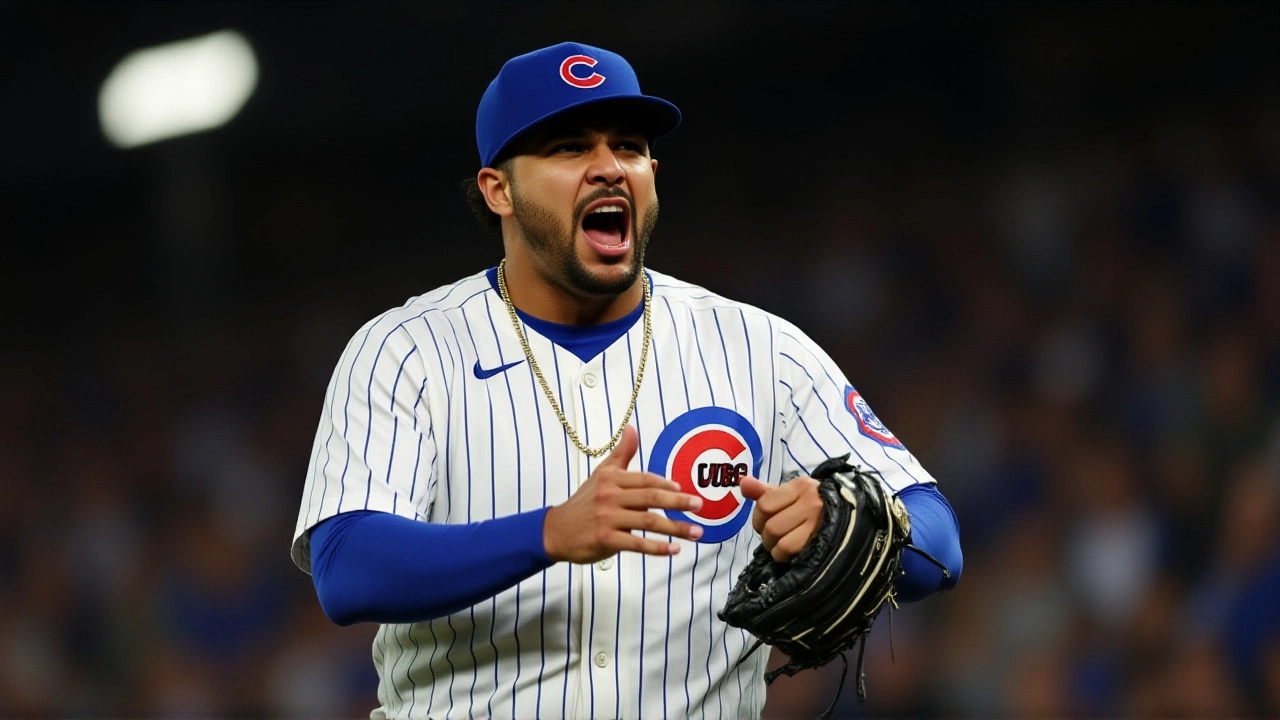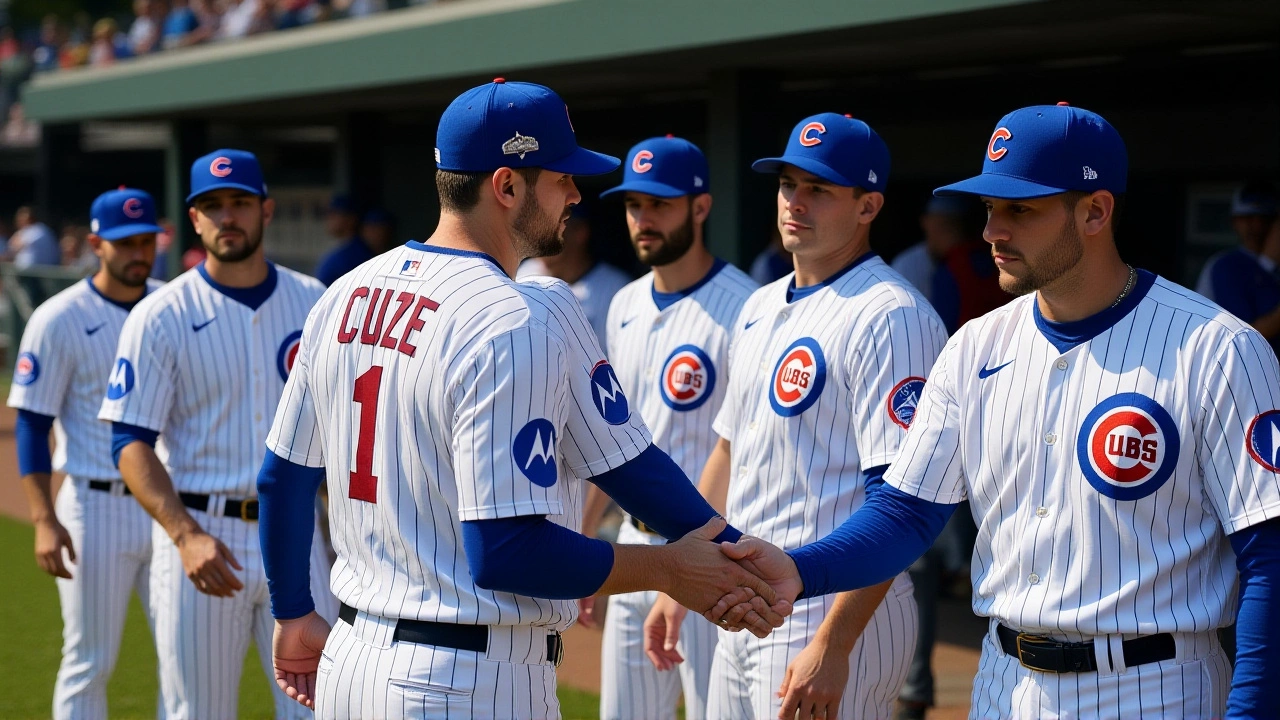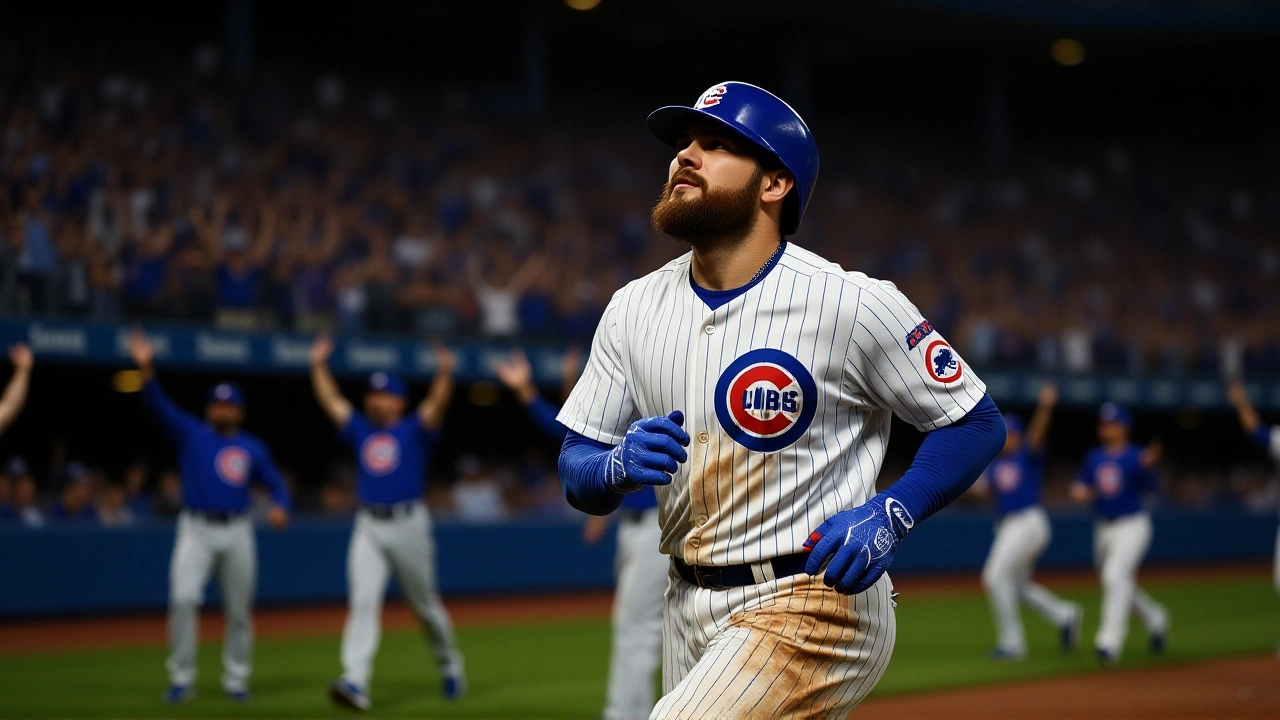When Chicago Cubs blanked the Milwaukee Brewers 6‑0 at Wrigley Field on October 9, 2025, the entire stadium felt the ripple of a shutout that tied the National League Division Series at 2‑2.
The decisive blow came in the bottom of the first when Ian Happ launched a solo shot that not only put Chicago on the board but also made history: the Cubs became the first team ever to homer in the first inning of four straight postseason games. Behind that historic moment, Michael Busch added a second‑ inning solo home run, cementing a night of timely hitting.
Historic First‑Inning Power
The streak began back on October 5, when the Cubs’ leadoff hitter smacked a three‑run homer in Game 1. By Game 4, analysts were scrambling to explain what the league called “the early‑game avalanche.” In a post‑game interview, manager Craig Counsell credited the team’s aggressive “first‑pitch‑first‑base” philosophy, noting that the lineup was rehearsed to swing at the first good offering.
Statistically, the Cubs have logged eight first‑inning runs in the series, an NHL‑style 2.7 runs per inning, dwarfing the Brewers’ 0.9. That early lead forced Milwaukee into a chase mode they could never fully recover from.
Pitching Duel and Bullpen Masterclass
Starter Matthew Boyd set the tone, delivering five solid innings of two‑hit, one‑run baseball before the bullpen took over. Though Boyd left with a 1‑0 lead, his 94 mph fastball and crisp slider kept the Brewers guessing.
Opposing ace Freddy Peralta struggled after the second inning, surrendering three runs on five hits before the manager pulled him. The Brewers’ relievers, led by Aaron Ashby, inherited a monster inning with two runners on and failed to halt Chicago’s momentum.
Chicago’s closer, a left‑handed fireballer, sealed the deal in the eighth, striking out two and allowing a single, giving the Cubs a clean sheet across nine frames.

Strategic Baserunning and Key Plays
Beyond the power, the Cubs displayed razor‑sharp baserunning. In the fifth, after a walk to veteran Matt Shaw, the team executed a double steal that moved runners into scoring position with no outs. The move forced the Brewers’ reliever into a wild‑pitch scenario, and a subsequent single by Nico Hoerner pushed a run across.
That aggressive push turned a one‑run lead into a three‑run cushion, demonstrating that the Cubs weren’t just relying on home runs; they were engineering runs piece by piece.
Reactions from Managers and Players
After the final out, Counsell praised his staff’s resilience: “Our guys stuck to the game plan—attack early, keep the pressure on, and trust the arms we have. The bullpen did exactly what we asked.’’
Milwaukee’s skipper Stephen Nelson admitted the team was “out‑played in almost every facet,” but remained hopeful about Game 5, citing the Brewers’ strong offense in Game 1 and the depth of their rotation.
For Happ, the homer was a personal milestone. “I just wanted to get a good swing early, and the ball found the sweet spot. It’s crazy to think we’re the first to do this in a single postseason,’’ he said, grinning.

Looking Ahead to Game 5
Game 5 is slated for October 11 at Wrigley Field, with the winner advancing to the National League Championship Series. The Cubs will likely ride the hot bat of Happ and Busch, while relying on the bullpen to protect a small lead.
The Brewers, meanwhile, must regroup. Their ace Peralta is expected to return, and manager Nelson hinted at a potential lineup tweak, possibly inserting rookie outfielder Cole Hiram to spark the offense.
Historically, NLDS series that reach a decisive Game 5 are tightly contested, with road teams winning 57% of the time. Chicago’s home‑field advantage could be a decisive factor, especially as the wind off Lake Michigan often plays tricks on fly balls.
Regardless of the outcome, the series has underscored the fierce rivalry between the two Central division stalwarts, a rivalry that has intensified with every regular‑season meeting this year (81‑81 overall). The final showdown promises a blend of power, pitching precision, and tactical chess.
Frequently Asked Questions
How does the Cubs’ early‑inning home run streak impact their odds in Game 5?
The streak has forced Milwaukee to pitch under pressure from the outset of every game. Statistically, teams that lead after the first inning win about 68% of the time, giving Chicago a clear psychological edge heading into the final match.
What adjustments might the Brewers make to break the Cubs’ momentum?
Nelson is expected to shuffle his lineup, perhaps inserting a left‑handed bat to counter Chicago’s right‑handed starters. He may also deploy a quicker‑relief strategy to keep Cubs’ hitters off balance early in the game.
Who are the key pitchers to watch in the decisive game?
For Chicago, left‑hander Zach Davies could start, offering a mix of sinkers and sliders. Milwaukee will likely turn to ace Freddy Peralta, who boasts a 2.85 ERA this postseason.
What does this series say about the current state of the NL Central?
The tight back‑and‑forth illustrates how evenly matched the division is. Both clubs posted over 90 wins, and the series highlights the importance of depth in both the bullpen and bench for playoff success.
When is Game 5, and where can fans watch it?
Game 5 kicks off at 7:05 p.m. CT on October 11, 2025, at Wrigley Field. It will be broadcast nationally on Fox and streamed live via the MLB app.
